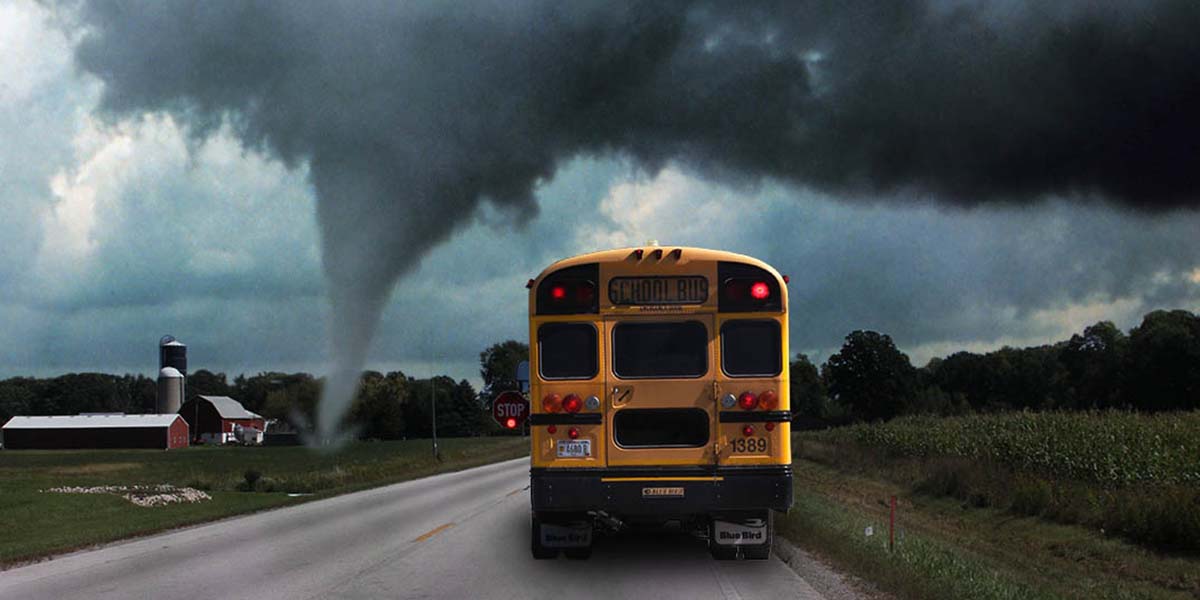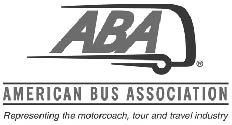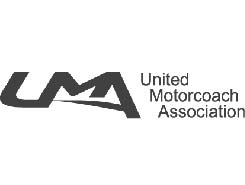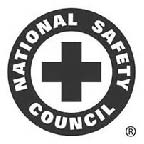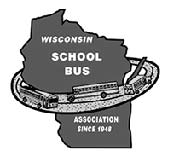This week is Wisconsin’s Tornado & Severe Weather Awareness Week and a good chance for drivers, passengers, students and families to be reminded of our plan of action should a bus encounter a tornado. This is the information we expect every driver to follow in case of a tornado.
1. Upon first sighting a tornado, determine in which direction it is traveling and whether it will hit you.
2. If the tornado is moving toward the area you are driving toward, do not continue in that direction. Instead, either stop if the storm is very close, or retreat at right angles to the storm’s path if it is not nearby.
3. Do NOT attempt to outrun a tornado which is bearing down on your vehicle.
4. If there is a likelihood that the tornado will hit your vehicle, and there is no escape route available: (if time permits – radio base quickly with location and circumstance)
a. Evacuate the bus.
b. Take only the first aid kit.
c. Do not allow the students/passengers to take personal possessions other than coats and jackets. These items could be used to cover their heads and bodies.
d. Avoid areas with many trees.
e. Do not take the students/passengers to an underpass. It is not known how safe an underpass is or how much shelter it would provide from flying debris in a strong or violent tornado. Flying debris causes most of the deaths and injuries in tornadoes. It is much safer for the students to be in a ditch.
f. Take the students/passengers to the nearest ditch, depression, or ravine upwind (on the storm side) of the bus far enough away from the bus so that bus will not roll over on them.
g. Instruct the students/passengers to lie flat and to cover their heads with their arms.
5. If you are driving when you hear a tornado warning or spot a funnel and there is no time to move the students to a ditch, have the students/passengers assume the protective position, remaining in their seats with their heads below window level. Shut off the vehicle, except for the lights, and get under the dash away from the door.
6. If there is a house or building nearby which offers shelter and there is enough time to reach it, move to the basement of the building away from the south and west walls. It would be best to have the students/passengers hide under a sturdy table or workbench away from crumbling walls, chimneys and debris that may fall into the basement. If there is no basement in the building, move to a inside room, without windows, on the lowest floor – like closets or bathrooms. If there are no closets or bathrooms, a center hallway would provide the best protection. Put as many walls as you can between the students/passengers and the tornado. Covering riders with cushions, blankets or mattresses will prevent some flying debris from injuring the students.
7. After the tornado has passed, look for further funnel clouds. If none are apparent, see to the safety of your students/passengers. If they are in a ditch, return them to the bus to avoid severe rain and hail which often accompanies a tornado. Attend to the injured passengers. Notify authorities as soon as possible. It is very important that the bus driver remain calm and to keep everyone calm.
If you are waiting to load a group or route and there is a serious storm approaching, they may choose to remain in the building until the danger has passed. Make sure the bus office is aware of the delay, secure the bus, take the keys and go in to the building until the danger has passed.
We’ll try to announce over the two-way if there is a Tornado Watch or Warning for our area.
